Hello Everybody!
In the previous post (Love during the times…) I shared with you the result of my research about the historical evolution of the wedding. After that I tried to figure out how are the wedding in the rest of the world and in cultures really different from mine.
Below the infos that I particularly like.
In some cultures polygamy was accepted and in some places to have more than one wife is a symbol of power and richness.
1. Islam’s Weddings
The marriage is an union between a man and a woman but, in some case, is allowed to have up to four wives (according to Corano scriptures in Sura of women) and all of them must be equally  important. It is not a religious sacrament, instead it is a contract based on religious foundations. The celebrant is an important man of the muslin community (he could be an Imam) and there are some witness. It could be in a Mosque (called “nikâh” o “fâtiha”), in the city hall or in one of the spouses’ house. The man gives a “donation”to the spouse, it is a symbol of his affection and love for her. In indonesia (almost completely muslin country) only men and women of same faith can have a wedding, it is not possible for atheists have a marriage.
important. It is not a religious sacrament, instead it is a contract based on religious foundations. The celebrant is an important man of the muslin community (he could be an Imam) and there are some witness. It could be in a Mosque (called “nikâh” o “fâtiha”), in the city hall or in one of the spouses’ house. The man gives a “donation”to the spouse, it is a symbol of his affection and love for her. In indonesia (almost completely muslin country) only men and women of same faith can have a wedding, it is not possible for atheists have a marriage.
2. Indian Wedding
From ages the typical indian family was the “Common Family” in which more than one single family lives together and  and one helder takes the decisions for all the big family. In last 50 years a new rend starts and “Single Families” vision dominates on Common family tradition. In ours days the only marriage is the combined wedding, in which families choose the spouses, but it is necessary the authorization of the future couple to proceed with the wedding. Religious orthodox people oppose the Wedding based on love because they could challenge the social, religion or age barriers. Even though that fact, the divorces in India are a rarity (only the 1% of the couples divorce in comparison, for example, of 40 % of USA married couples). According to the traditions, the bride ‘family pay for the wedding and give to the her a big and rich supply of jewels and other goods. The celebration is complex and could have differences based on the specific place or the social class of the two families. The weddings based on love are ot encouraged because they could challenge the social, religious barriers.
and one helder takes the decisions for all the big family. In last 50 years a new rend starts and “Single Families” vision dominates on Common family tradition. In ours days the only marriage is the combined wedding, in which families choose the spouses, but it is necessary the authorization of the future couple to proceed with the wedding. Religious orthodox people oppose the Wedding based on love because they could challenge the social, religion or age barriers. Even though that fact, the divorces in India are a rarity (only the 1% of the couples divorce in comparison, for example, of 40 % of USA married couples). According to the traditions, the bride ‘family pay for the wedding and give to the her a big and rich supply of jewels and other goods. The celebration is complex and could have differences based on the specific place or the social class of the two families. The weddings based on love are ot encouraged because they could challenge the social, religious barriers.
The day before the wedding’s day the bride have a sort party with her female friends, during which the girls paint some Henné tattoo on the bride’s hands. The ceremony is really colored and could take more than one day and there are some typical rituals. There is a huge gazebo decorated with flowers and below the gazebo is installed a big fire.The groom arrive for first and the bride is accompanied by her father. When she arrive the grome act for three times the promise of assistance of the girl in the three fundamentals purpose of the wedding (Dharma = the principal of harmony Artha = wellness Kama = the desire that assists every action). There is 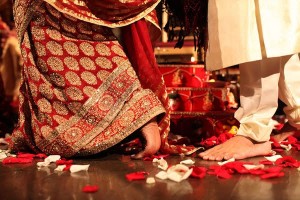 a specific serie of rituals from the celebrant and the spouses give each other rings, flowers and garlands and after they throw some offers in the holy fire. In the second part of the ceremony, the couple turn three times around the holy fire and act some prays.The last step of the celebration is the Ceremony of the Seven Steps in which the couple walk seven steps around the holy fire (or in a different signed path) and in every step they pray and act promises for their future life. The groom give to the bride a necklace with a figure of Shiva or Vishnu and pose some red dust in her head, these are the symbol of her new status of wife. At the end of the ceremony, the minister put a coconut in front of the wheel of the just married’s car, the break of the coconut is symbol of good luck!
a specific serie of rituals from the celebrant and the spouses give each other rings, flowers and garlands and after they throw some offers in the holy fire. In the second part of the ceremony, the couple turn three times around the holy fire and act some prays.The last step of the celebration is the Ceremony of the Seven Steps in which the couple walk seven steps around the holy fire (or in a different signed path) and in every step they pray and act promises for their future life. The groom give to the bride a necklace with a figure of Shiva or Vishnu and pose some red dust in her head, these are the symbol of her new status of wife. At the end of the ceremony, the minister put a coconut in front of the wheel of the just married’s car, the break of the coconut is symbol of good luck!
3. Jewish Wedding
The principal elements in a Jewish wedding are: the Ketubah (wedding contract)
 signed by two witness; the Chuppah (canopy in fabric), a ring property of the groom’s family for the bride and the traditional “glass break”.
signed by two witness; the Chuppah (canopy in fabric), a ring property of the groom’s family for the bride and the traditional “glass break”.
Formally there are two phases in the wedding: the first one, Qiddushin o Kiddishin (sanctification) in this phase the woman is forbidden anyone else except the groom; The second part is Nissuin (the wedding) starting from this phase the couple can live together. Today the first part (Kiddushin) happen when the guy make his proposal with the family ring. The celebrant is a rabbin helped by a chazzan from the synagogue.
At the end of the ceremony the groom break a glass. The meanings of this tradition  could be multiple: according someone it remember the destruction of the Jerusalem’s temple, for someone else it is useful against villain spirits and at least for someone else, it has a sexual symbology. If the groom doesn’t broke the glass at first time, according to the tradition, it means that will be the wife to have a complete control of the marriage life.
could be multiple: according someone it remember the destruction of the Jerusalem’s temple, for someone else it is useful against villain spirits and at least for someone else, it has a sexual symbology. If the groom doesn’t broke the glass at first time, according to the tradition, it means that will be the wife to have a complete control of the marriage life.
4. Buddhist Wedding
In Buddhist traditions it is not necessary any particular ritual celebration for the wedding. However a lot of couples decided to celebrate a little ceremony with relatives and friends for share the joy of the wedding. The ceremony is really deep and spiritual even if it is not a religious ceremony.
 The thing that I found extremely fascinating of that ceremony, is the participation of the guest. The ritual is composed of few steps: during the first some pieces of “Sutra of Loto” are read ( Hoben e Juryo) following by some minute of Daimoku (Mantra Invocation). At the end of the invocation, the spouses and the witness drink three sip of Saké from three different cups. These cups are the symbols of the three existance: past present and future. Before the end of the ceremony all the guest can partecipate and express their feelings for the couple, and their love and affection to the just married guys. At last there are some minutes of Daimoku to finish the ceremony.
The thing that I found extremely fascinating of that ceremony, is the participation of the guest. The ritual is composed of few steps: during the first some pieces of “Sutra of Loto” are read ( Hoben e Juryo) following by some minute of Daimoku (Mantra Invocation). At the end of the invocation, the spouses and the witness drink three sip of Saké from three different cups. These cups are the symbols of the three existance: past present and future. Before the end of the ceremony all the guest can partecipate and express their feelings for the couple, and their love and affection to the just married guys. At last there are some minutes of Daimoku to finish the ceremony.
5. Wedding in Sikh Religion
According to Sikh principals, the wedding is a sacrament. The ritual is simple: The couple turn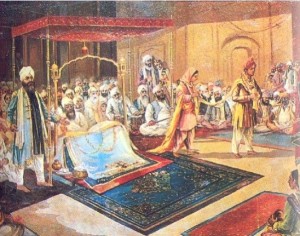 for four time around the
for four time around the
Shri Guru Granth Sahib and, during this walk, the celebrant act some poem, called Shabad. These poems must be an inspiration for the new family’s life.
6. Chinese Wedding
In Imperial China the monogamy is the rule, but richest social classes could have some concubines. There was a big wedding celebration for the “Primar Wife” and only the kids of this wife are legal. The concubine’s children are not 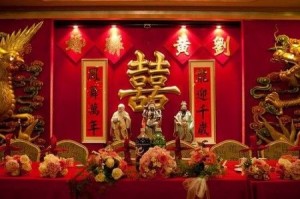 legitimate. Under the communist ages in China start a control of birth politic and to have a concubines became illegal and forbidden. Today the ceremony it is not a religious ritual and could take more than one day. It is a sort of show: the engaged act their promise on a stage, no witness are necessary, but they could have an assistant for alla the day (or days). The dominant color is the red, everything is red! According to the Chinese tradition, the bride’s dress is red with a cape (xiapei) and a headgear (fengguan), she wear a lot
legitimate. Under the communist ages in China start a control of birth politic and to have a concubines became illegal and forbidden. Today the ceremony it is not a religious ritual and could take more than one day. It is a sort of show: the engaged act their promise on a stage, no witness are necessary, but they could have an assistant for alla the day (or days). The dominant color is the red, everything is red! According to the Chinese tradition, the bride’s dress is red with a cape (xiapei) and a headgear (fengguan), she wear a lot  off jewels and gems. In our days the bride changes tre dress: A traditional chinese dress in the morning, a white dress with a tail inspiring to occidental culture for the ceremony and a red long dress for the evening.
off jewels and gems. In our days the bride changes tre dress: A traditional chinese dress in the morning, a white dress with a tail inspiring to occidental culture for the ceremony and a red long dress for the evening.
The symbol for the groom is a dragon and for the bride is a phoenix. According to the ancient traditions the wedding’s day the bride arrives in a sedan chair and she should stay completely in silence and she should not eat anything all over the day. The most important moment of the day is the ceremony of the tea that the just married serve to their parents with gratitude. The chinese bride has a bouquet, but she doesn’t throw it to her friends.
7. Japanese Wedding
It is a Shintoist ritual. All the weddings are celebrated in particular periods of the year, periods that are considered more favorable. It happens in a sanctuary with a minister in traditional clothes (he wears a particular hat and a scepter). The bride wears a Shiromuku (a traditional white dress) or an embellished Kimono with a traditional headgear. The groom 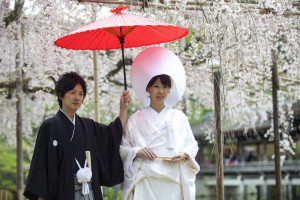 wear a ceremony’s Kimono. Before the beginning of the celebration the engageds and all the guest play the ritual of purification and the minister announces the wedding to the gods and in the meantime, he makes some bows. During the ceremony the couple drinks little sips of saké. At the end of the ceremony the the husband promises faithfulness and obedience to the her wife . Before leave the sanctuary, wife and husband and their parent make some offers to gods.
wear a ceremony’s Kimono. Before the beginning of the celebration the engageds and all the guest play the ritual of purification and the minister announces the wedding to the gods and in the meantime, he makes some bows. During the ceremony the couple drinks little sips of saké. At the end of the ceremony the the husband promises faithfulness and obedience to the her wife . Before leave the sanctuary, wife and husband and their parent make some offers to gods.
In this post I don’t want to write a paper about wedding, I only want to share with you some interesting facts I figure out. I really enjoy learn more about different cultures and traditions! I hope to not have write some mistake, if I had, please leave a comment with the corrections!
What about you?Leave a comment with your opinions!
I hope you enjoy the post… in few days other post based on LOVE!
Stay tuned
Tricks on this post: 1. Wedding traditions in the most important cultures in the world
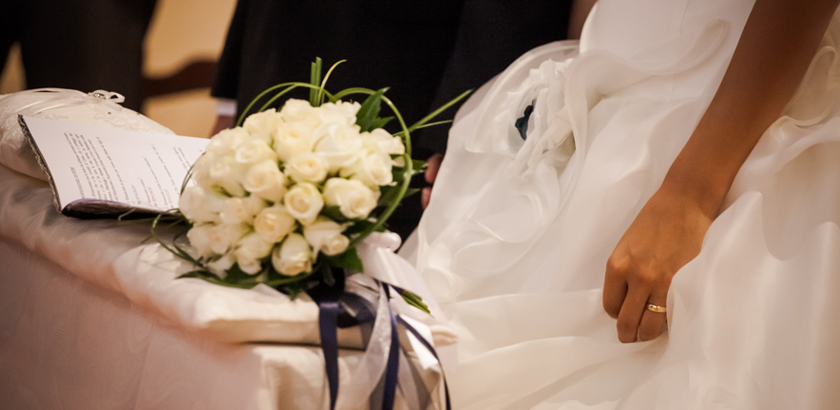
Your post extremely cool. I glad to be here. I enjoyed reading your articles and i would like to bookmark your posts.